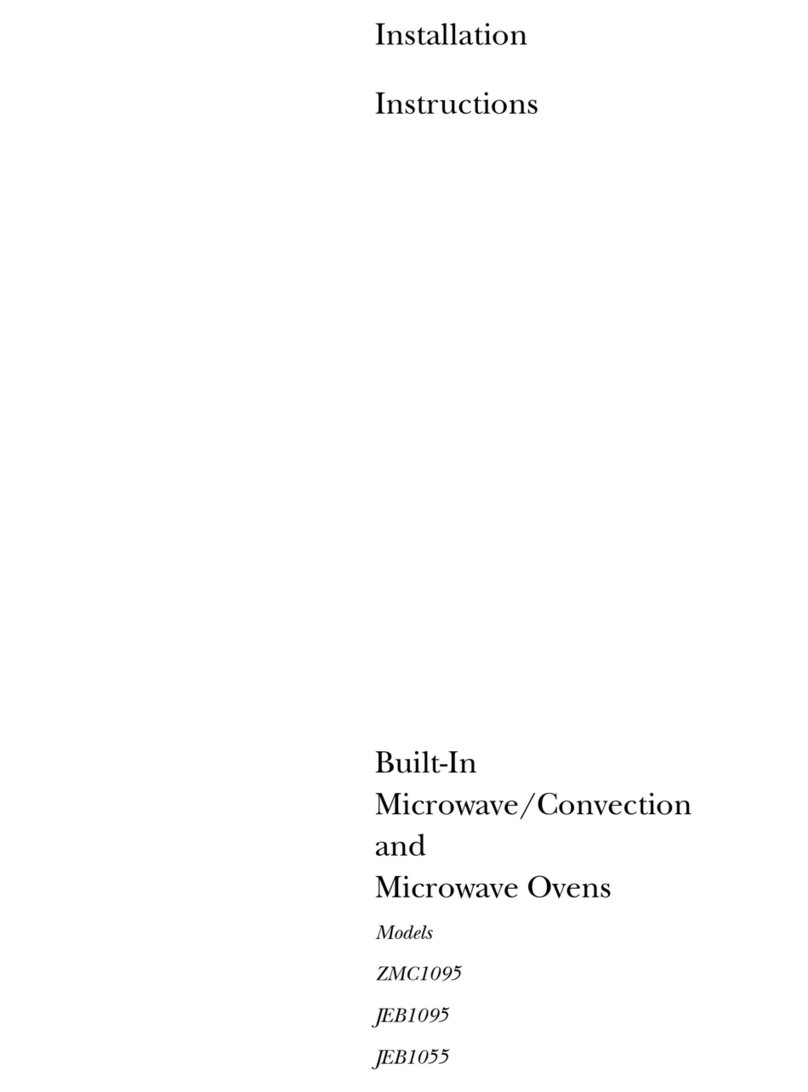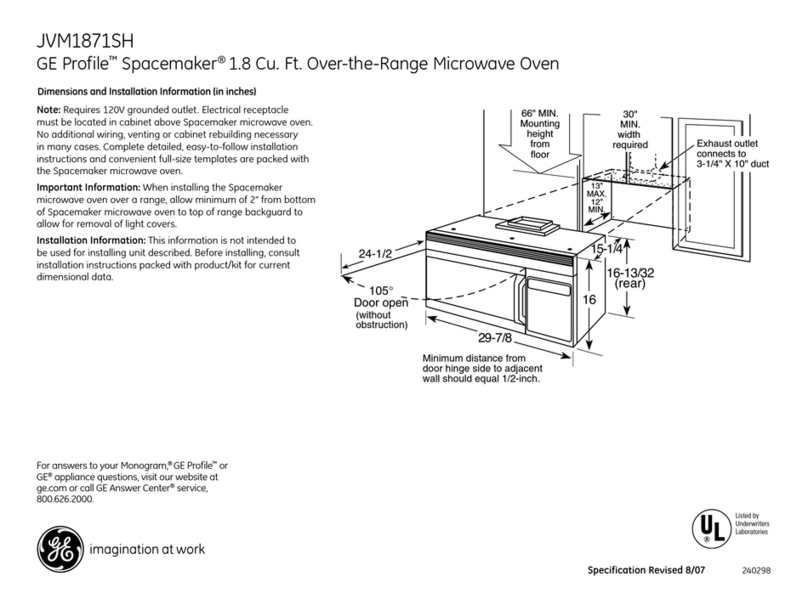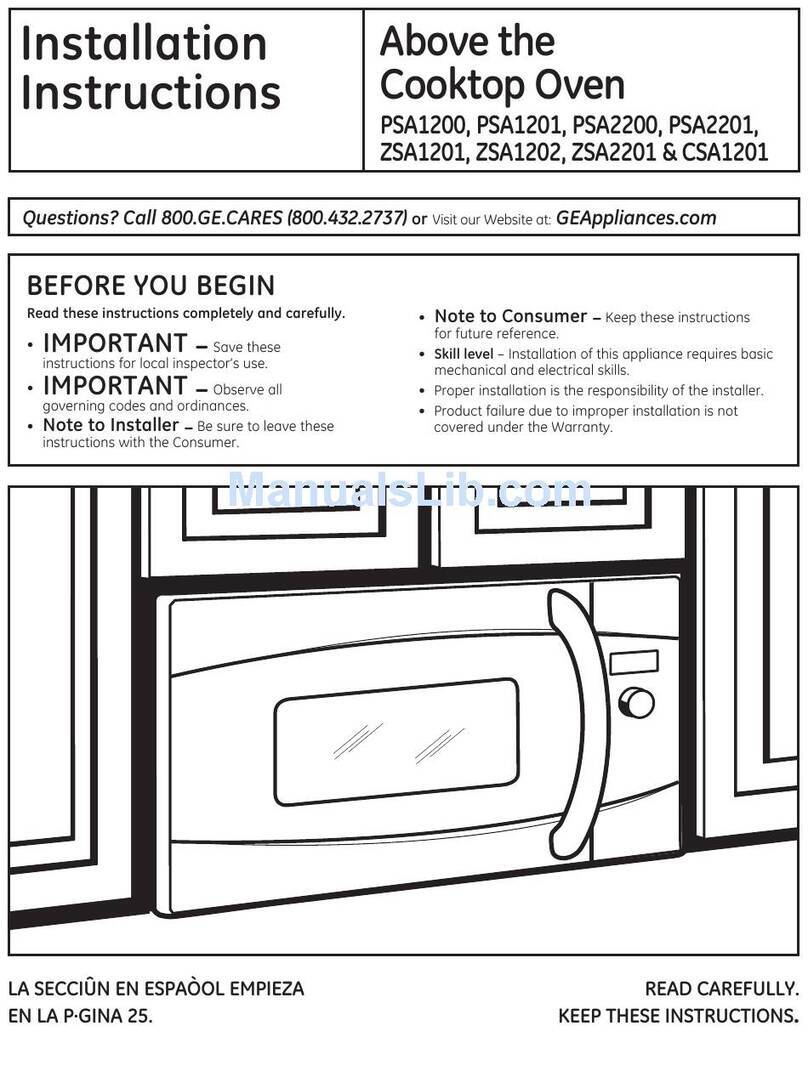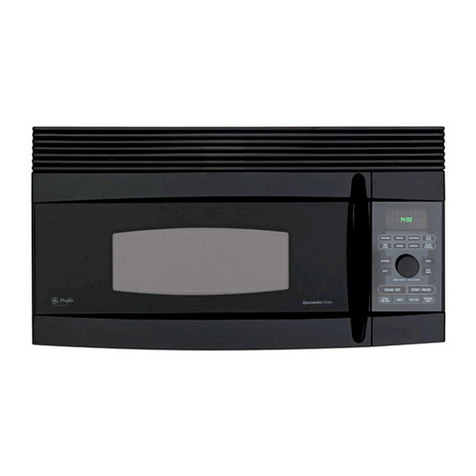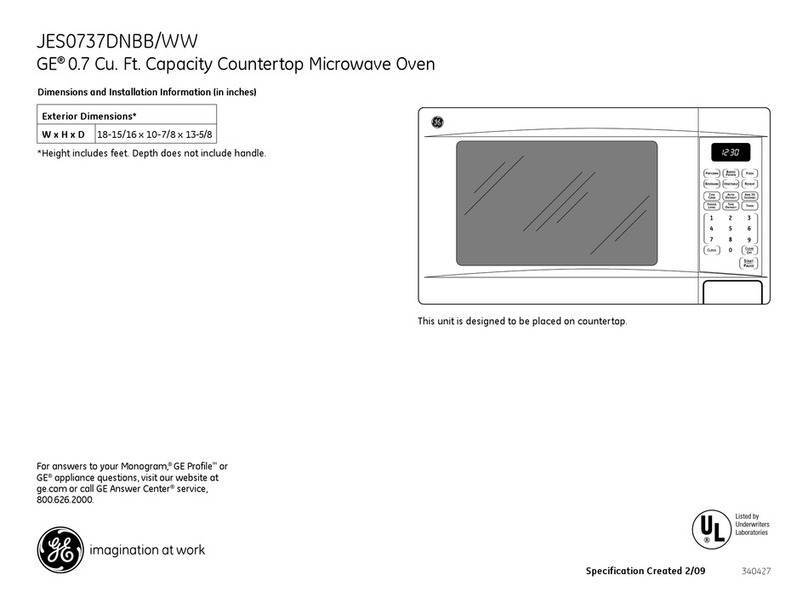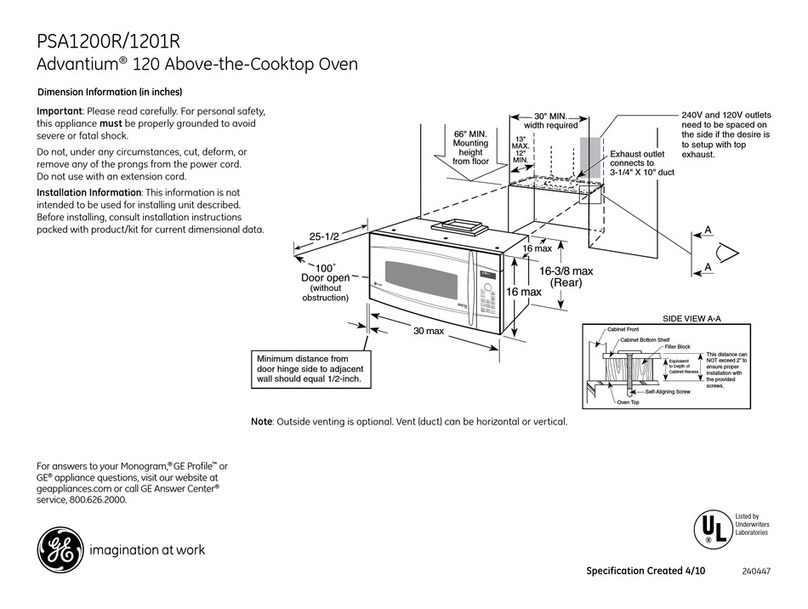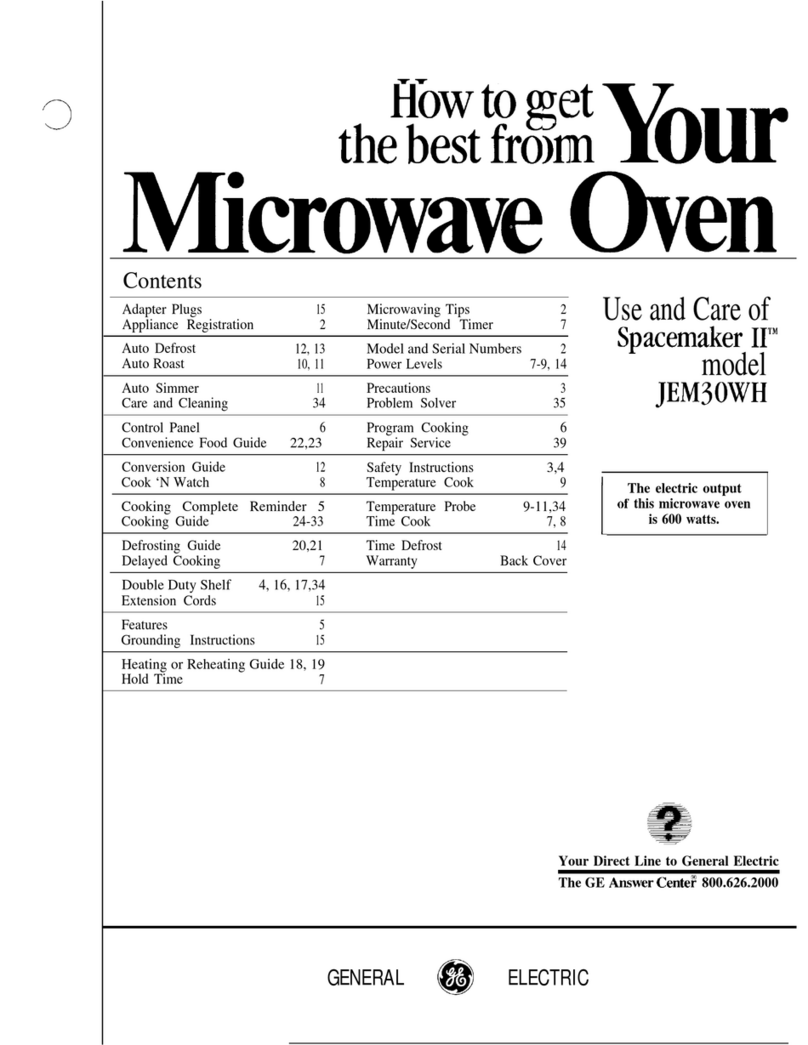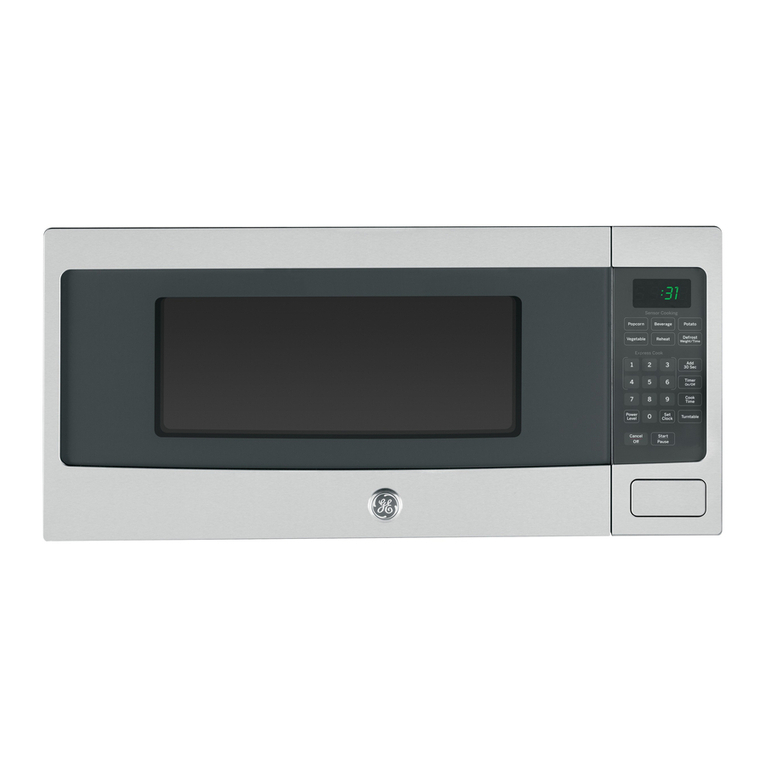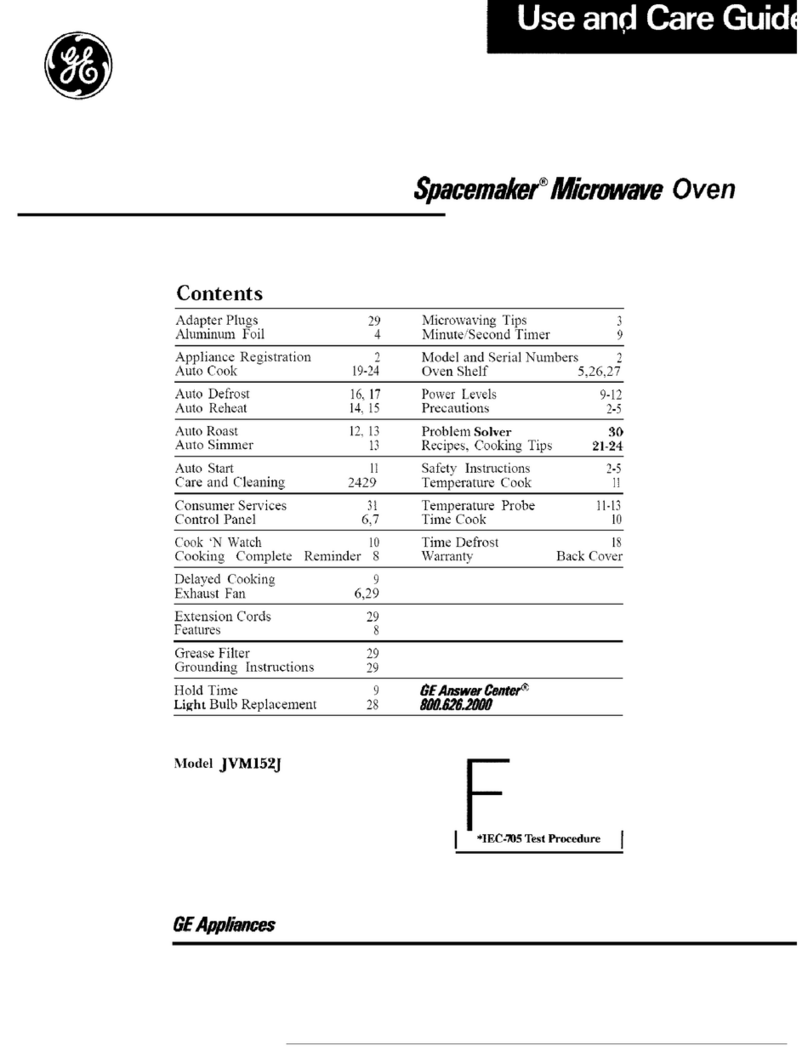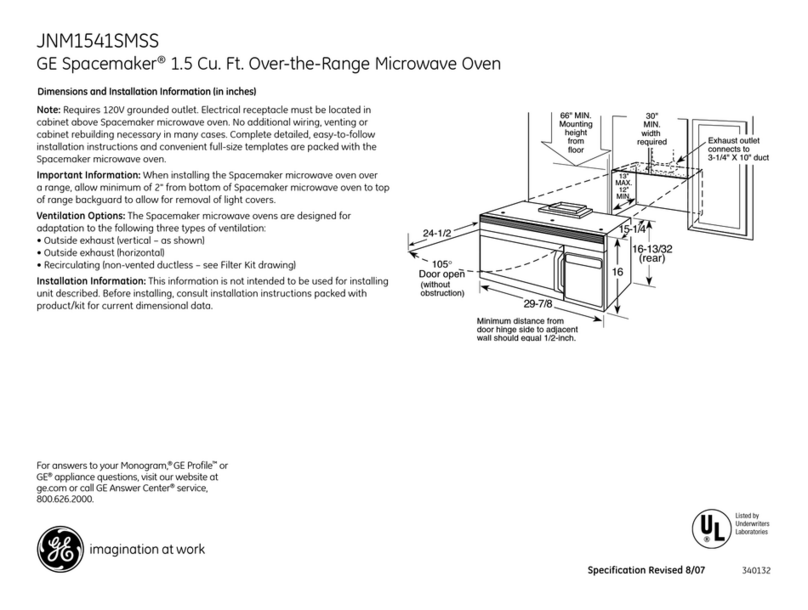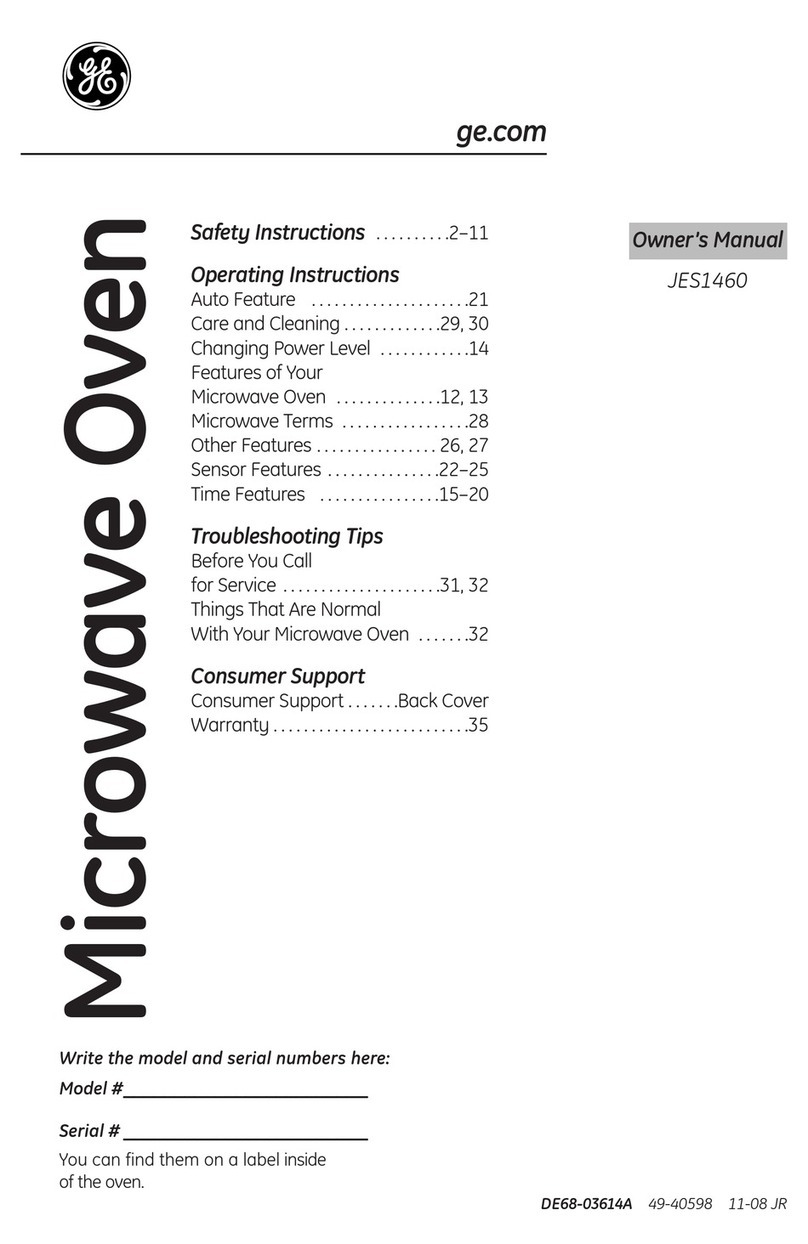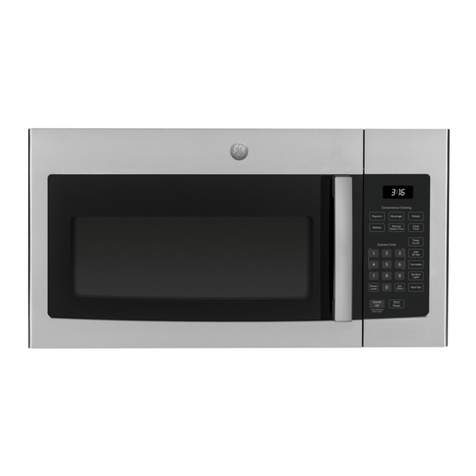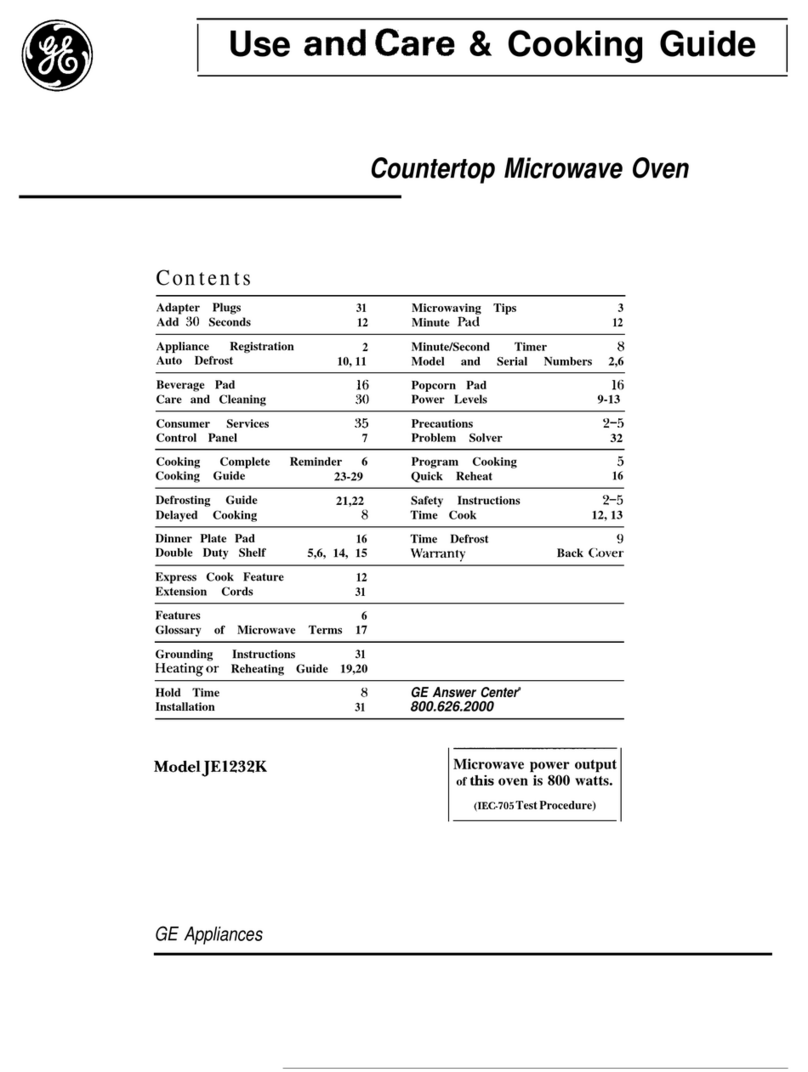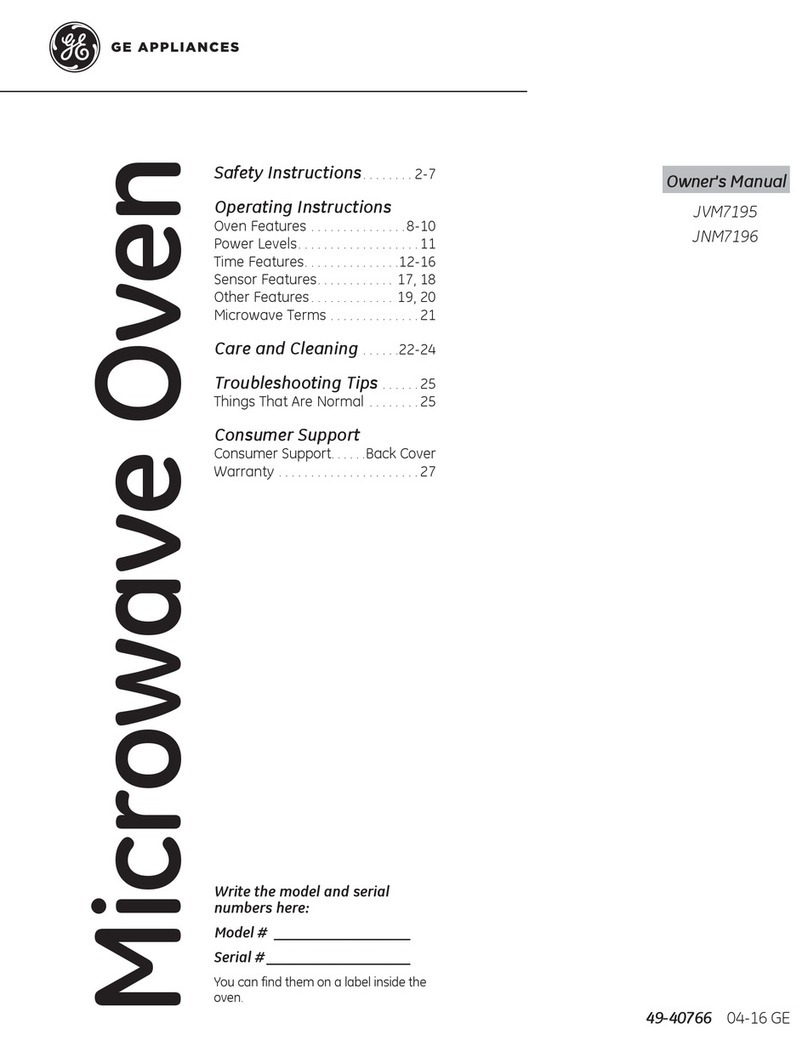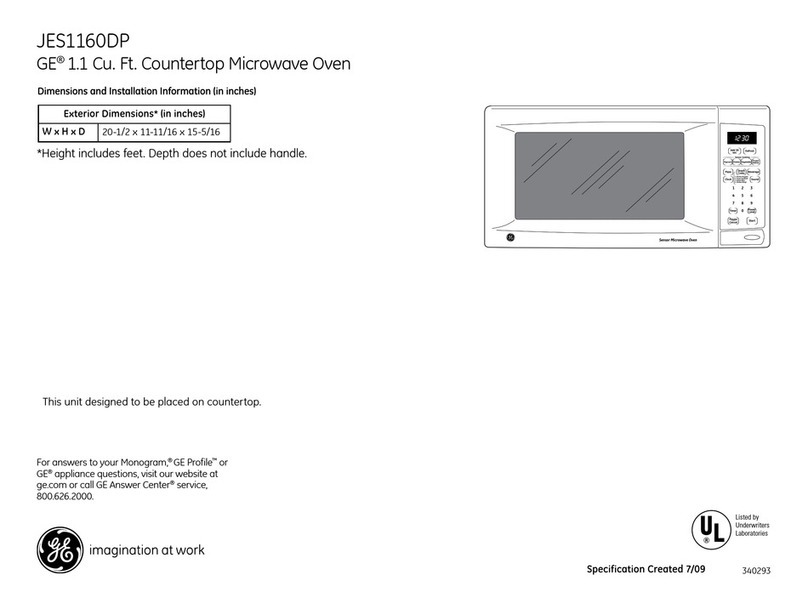
J
‘!
WORTANT
SAFEH
mSTRUCTIONS
(continued)
—Do not use the oven for storage purposes, Do
not leave paper products, cooking utensils or
food in the oven when not in use.
—If materials inside oven should ignite, keep
oven door closed, turn oven off, and disconnect
power cord, or shut off power at the fuse or
circuit breaker panel.
Q
When using the convection or combination
cooking functions, both the outside and inside of
the oven will become hot. Always use hot pads to
remove containers of food and accessories such as
the metal accessory rack and temperature probe.
●
Oversized food or oversized metal cookware
shodd
not be used in a microwave/convection
oven because they increase the risk of electric
shock and could cause a fire.
●
Do not clean with metal scouring pads. Pieces
can burn off the pad and touch electrical parts
involving risk of electric shock.
●
Do not use paper products when the
microwave/convection oven is operated
in
the convection or combination mode.
●
Do not store any materials, other than our
recommended accessories, in this oven when
not in use.
●
Don’t defrost frozen beverages in narrow
necked bottles (especially carbonated beverages).
Even if the container is opened, pressure can build
up. This can cause the container to burst, possibly
resulting in injury.
●
Use metal only as directed in this book. TV
dinners may be microwaved in foil trays less
than 3/4” high; remove top foil cover and return
tray to box. When using metal in the microwave/
convection oven, keep metal (other than metal
shelo
at least 1 inch away from sides of oven.
●
Do not cover the shelf or any other part
of the oven with metal foil. This will cause
overheating of the microwave/convection oven.
●
Cookware may become hot because
of heat transferred from the heated
food. Pot holders may be needed to
handle the cookware.
●
Sometimes, the oven
floor
and
wails can
become
too hot to touch. Be careful touching the
floor
and walls during and after cooking.
●
Foods cooked in liquids (such as
pasta)
may tend
to boil over more rapidly than foods containing
less moisture. Should this occur, refer to the
Cme
and Cleaning section(s) for instructions on how to
clean the inside of the oven.
●
Thermometer—Do not use regular cooking
or oven thermometers when cooking by
microwave or combination. The metal and
mercury in these thermometers could cause
“arcing” and possible damage to the oven.
Do not use a thermometer in food you are
microwaving unless the thermometer is designed
or recommended for use in the microwave oven.
●
Remove the temperature probe from the oven
when not using it to cook with. If you leave the
probe inside the oven without inserting it in food
or liquid, and turn on microwave energy, it can
create electrical arcing in the oven, damage oven
walls and damage the temperature probe.
●
Plastic
cookwar+Plastic
cookware designed
for microwave cooking is very useful, but should
be used carefully. Even microwave-safe plastic
may not be as tolerant of overcooking conditions
as are glass or ceramic materials, and may soften
or char if subjected to short periods of
overcooking. In longer exposures to overcooking,
the food and cookware could ignite. For these
reasons: 1) Use microwave-safe plastics only and
use them in strict compliance with the cookware
manufacturer’s recommendations. 2) Do not
subject empty cookware to microwaving. 3) Do
not permit children to use plastic cookware
without complete supervision.
●
When cooking pork, follow the directions
exactly and always cook the meat to an internal
temperature of at least
170°F.
This assures that, in
the remote possibility that trichina may be present
in the meat, it will be killed and meat will be safe
to eat.
●
Do not boil eggs in a microwave/convection
oven. Pressure will build up inside egg yolk and
will cause it to burst, possibly resulting in injury.
4
